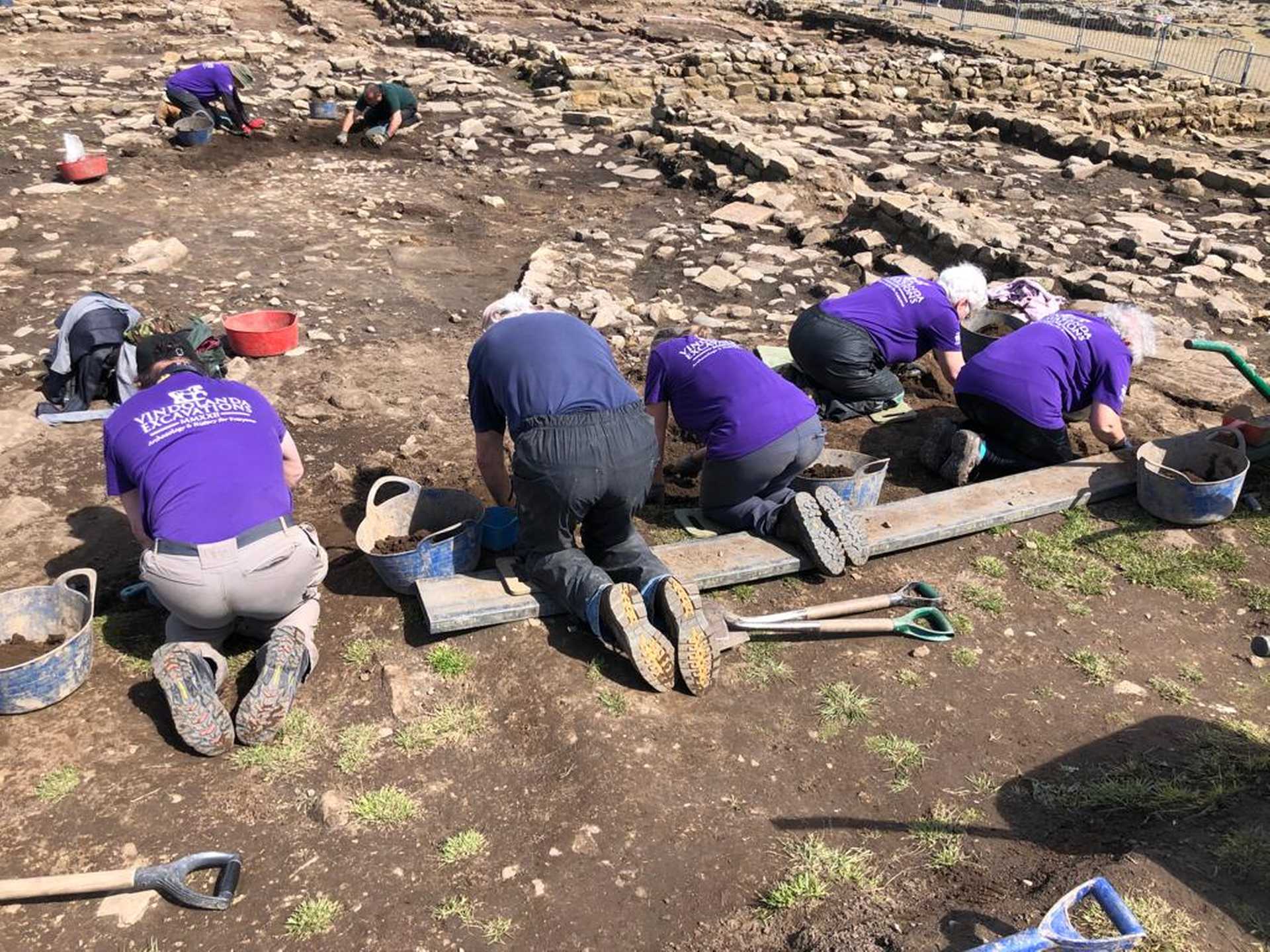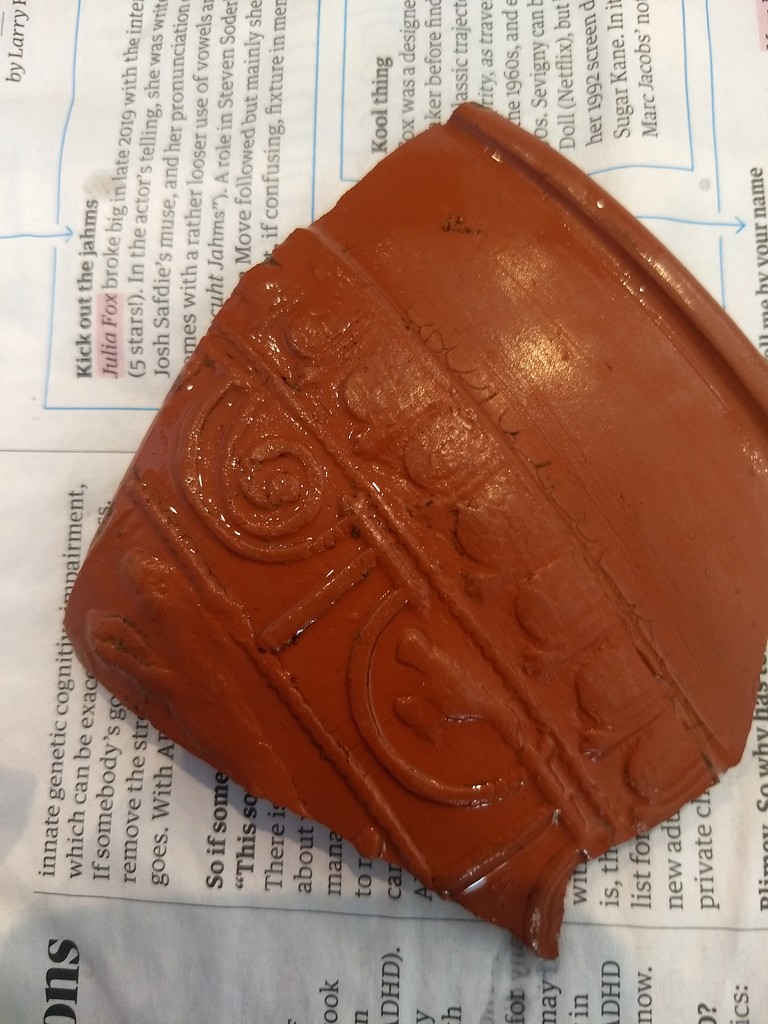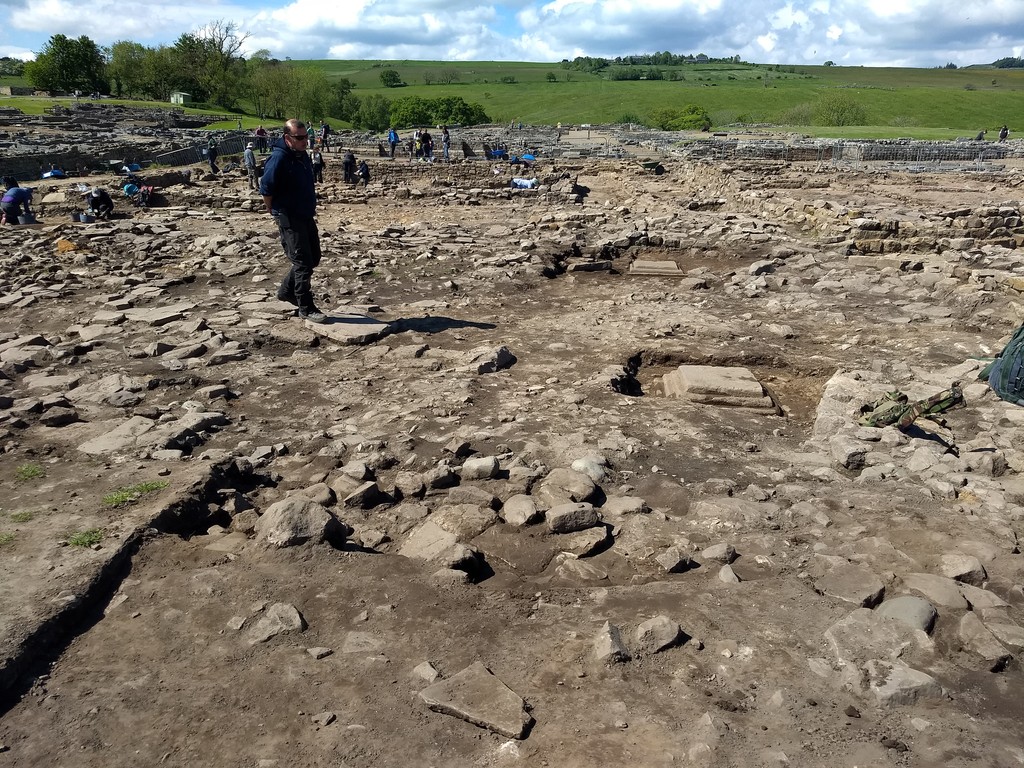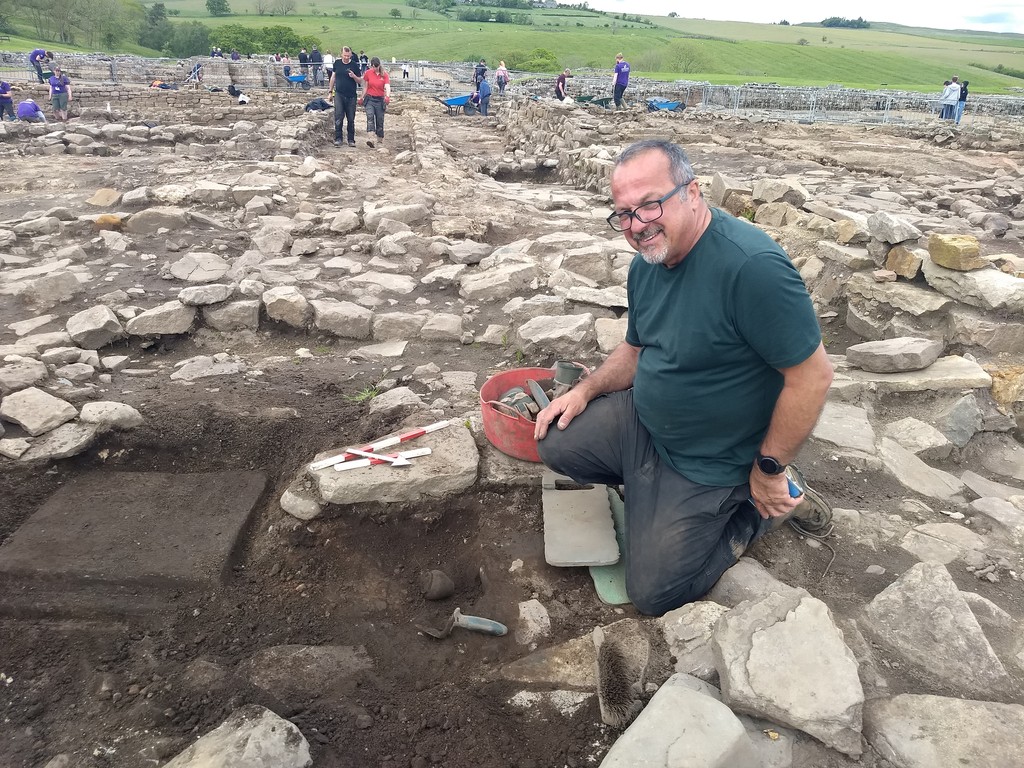
Vindolanda is the site of some Roman forts just south of Hardian’s wall. It’s excavated using volunteers, supervised by a small team of archaeologists and run by the Vindolanda Trust. We decided to pay our money and join the volunteers. You sign up for two weeks digging and the places go faster than Glastonbury tickets. It’s a team of 30 volunteers, most of whom have been many times before.
I was allocated a trench where we were digging an antonine turf rampart. It made no sense to me at all despite Andrew ( the CEO and lead archaeologist) and Penny (events manager and archaeologist) explaining to me how you could see the raft and turfs in the wall of the trench. Now I think of ramparts as walls,and I spent the first day next to experienced Wendy on my knees with the trowel doing what she suggested. Wendy was great and my thanks go to her but my ignorance was letting me down. In the evening I resorted to Google and found a paper, written by Andrew on Antonine ramparts. So here is Tracey’s dummy explanation. The Romans took branches and laid them on the floor to make a raft about 4 metres wide, effectively the foundations for the ramparts. Then they cut lumps of grass turf and pile them on top of the “raft” sometimes in layers with more structural rafts to a high of about 5 meters. You can easily see the turfs in the trench wall once you know what you are looking at. We eventually got down to the raft after a few days of digging and I was allocated the task of trowelling out between the branches. I loved doing this, and I have to thank Wendy and Gill for letting me do it rather than extending the trench which they did. As you peeled back the turf, (which still has the grass and the moss in it) the branches look golden. So much so that my first thought was that they had used wood shaped gold, but they turn black within minutes of being uncovered. Our next job was to dig under the raft to look what if anything was there, but the rain which fell constantly became a deluge and our trench became a swimming pool.
Vindolanda – Antonine rampart trench, turf sods can be seen in the trench wall. Gill cleaning her boots. Vindolanda – Antonine rampart raft made of beech. Look carefully and you can see the turf sods in the trench
Vindolanda – Antonine rampart raft sunk under rain water. Vindolanda – rampart raft 2 days after the rain
Play was stopped and a fantastic lecture on murder at vindolanda was given by Andrew in the dry of the hut. The next day the rain had eased to a drizzle and we started on a new trench combined with another team. This time digging a 4th century mass of rubble to find out what was under it. I think the answer is more rubble, but a round house showed its foundations for us. In this trench we found lots of pot, nails and some glass, along with a rather nice fancy key end and some type of metal probe.
Vindolanda – in the rubble is the inner and outer wall of a round house. Trust Andrew’s word not mine. Vindolanda – Dougs key
John was set to work digging under a 3rd Century fort. The plan was to get to the 2nd century fort underneath and then dig under that to reach the 1st century wooden fort underneath. Unfortunately the digging also exposed a wooden drain which was still functioning, especially after the heavy rain and they reached a point where any digging was impossible as the trench was permanently under water. John did unearth a pot which although broken by the floor above it was still held together by the clay surrounding it. The contents (possibly containing ash and bones from a cremation) were collected together to be sent of for analysis.
Some really good stuff was found while we were there, a whole pot, (see Vindolandas post here), meat cleaver, chisel, ring, etc. but not by me. I found nothing that was classed as a small find, which gets special care just the standard broken pot, bone, glass and nails.
We also did half a day on post excavation, washing things that had previously been found. This is quite good fun as you get to see some rather nice bits of pots.
Vindolanda – Horse tooth we washed Vindolanda – Samian ware that I washed Vindolanda – post excavations
I’ve made some great friends, and yes, I will be going again.
I’m well over my 400 word limit so I will stop writing but if you want to be bored to death, invite yourself to a meal at our house. Otherwise just feast your eyes on the remaining photos.
Period 5 volunteer team Vindolanda – Gill and Wendy. A great team Vindolanda – these two column bases caused Andrew (in shot) to get very excited Vindolanda – John digging Vindolanda – Gill digging Vindolanda – Gill with samian pot Vindolanda – Michael with column base and owl pot Vindolanda – Owl pot Vindolanda – Johns trench after the heavy rain Vindolanda – John’s small find, possibly two cremation pots Vindolanda – intaglio (a small engraved gemstone) found by a colleague in John’s trench Vindolanda – lunchtime Vindolanda – John’s trench, digging under a third centurary fort























